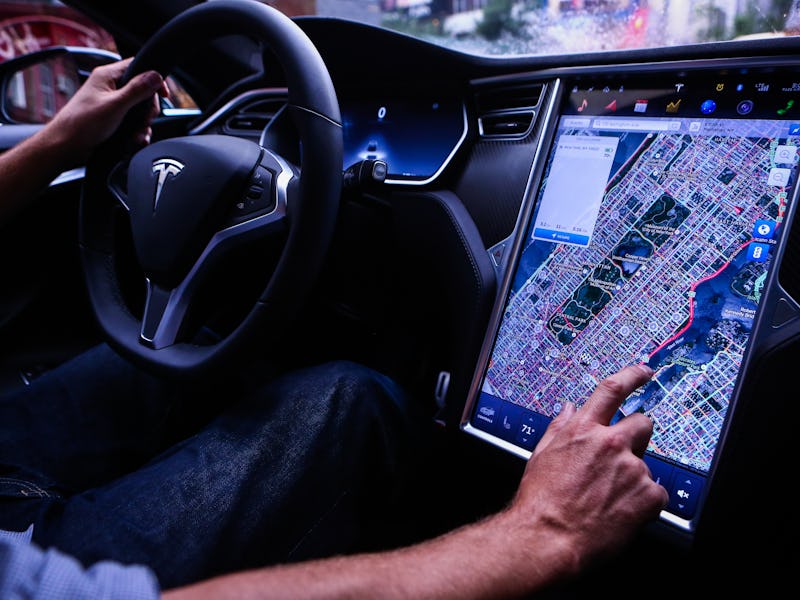Elon Musk explains why Tesla full self-driving could be 'superhuman'
The Tesla CEO is aiming to enable his company's cars to drive without human interaction.

When it comes to full self-driving, Tesla's setup of cameras and sensors "can definitely be superhuman," Elon Musk declared Tuesday.
The CEO explained on his Twitter page, with over 33 million followers, that the company's plans for fully autonomous driving could outshine a regular human driver.
Humans, Musk wrote, drive "using 2 cameras on a slow gimbal & are often distracted."
Tesla's system, on the other hand, can drive "with 8 cameras, radar, sonar & always being alert."
Computers, Musk explained, can also complete lightning-fast calculations:
"Certainly no problem for a 144 trillion operations per second computer to make ~15 steering/acceleration/braking maneuvers per second. That’s a trillion calculations between each output command."
The comments outline one of Musk's major beliefs: humans are not that great at driving, compared to a permanently-alert sensor suite.
In September 2016, he declared that the company's new radar system, which can enable the car to detect objects even obscured by vision, would make its vehicles three times safer than an unaided car.
During the company's January 2019 earnings call, he described autonomy as “very important to save millions of lives, tens of millions of serious injuries, and give people their time back so they don’t have to drive.”
Tesla unveiled its full self-driving suite in October 2016. From that point onward, every vehicle the company ships would come with the necessary cameras and sensors to one day support fully autonomous driving.
An uphill battle -- A planned cross-country autonomous drive in 2017 never materialized. Musk admitted in October 2018 that it was “extremely difficult to achieve a general solution for self-driving that works well everywhere.”
A plan to ship a "feature complete" version, which could hypothetically drive point-to-point with human oversight, missed its ambitious end-of-2019 goal.
The company has taken steps toward autonomy in the meantime. It started shipping a more powerful computer, dubbed "Hardware 3," to power more advanced autonomous driving.
A Tesla Model S.
Tesla isn't the only carmaker that's struggled with full autonomy. Ford also promised in 2016 full autonomy within five years, but CEO Jim Hackett admitted in 2019 that the industry had "overestimated the arrival of autonomous vehicles," and those first vehicles in 2021 would have "narrow [applications], what we call geo-fenced, because the problem is so complex."
Others, like Uber, have also struggled to reach full autonomy, and a picture has emerged of an industry that underappreciated the complexity of the challenge.
There are signs of progress -- Waymo, in particular, has rolled out a fully autonomous taxi service in Phoenix, Arizona, without any safety driver providing oversight – a service it suspended last month amid the coronavirus outbreak. Tesla has also rolled out further semi-autonomous features like Navigate on Autopilot, which drives the car off the highway at the correct exit depending on destination.
Tesla stands out in the industry as, unlike others, it doesn't employ depth-sensing lidar sensors. Musk has described the technology as a "crutch," asking why a car would need lidar if the technicians had already solved the problem of computer vision. In an August 2019 interview, autonomous car startup Comma.ai founder George Hotz declared Tesla would "100 percent" reach full autonomy first, while Waymo's decision to use lidar was "not the correct strategy."
As the industry races to merely replace the human driver, Musk has set his sights on achieving something much more ambitious.